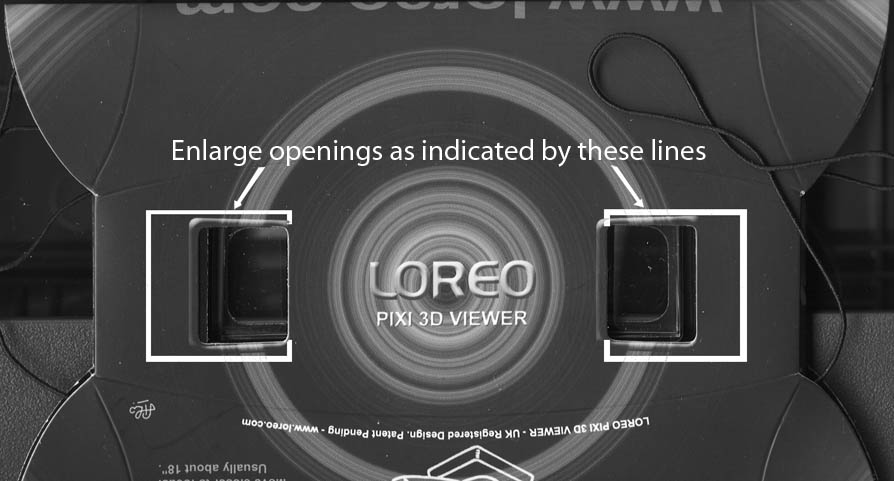

Stereo photographs consist of a image pairs, one for the left eye and one for the right eye. When viewed in binocular mode, the images occupy as much of the window as possible with the left image centered in the left half and the right image centered in the right half of the browser window. If you resize the browser window and reload, the images will be resized to fit the new configuration. As with the other images, you can use the controls at the bottom of the page to zoom in and out of the photograph and move around to see details. As long as sync is checked on the control bar, the views for the left and right are synchronized and the details can be seen in 3D. In Monocular mode, a single image occupies the entire browser window.
There are a variety of viewers available that use prisms or mirrors to make it possible see stereo images on the computer screen in 3D. One of the least expensive is the Loreo Pixi 3d Viewer. With only slight re-enginering (see diagram below) it works well with these images. This viewer uses wedge prisms to shift the view of the images. When the left eye is looking straight ahead it sees an image that is actually offset to the left. Similarly the view for the right eye is offset to the right. The amount of offset is determined by the angle of the prism and the distance from the image.
To use the stereo viewer, pop it open and look through the openings on the side with the prisms. (“View from this side” is printed on the viewer.) The best results are obtained when the distance from the viewer to the screen is approximately twice the width of the browser window.
